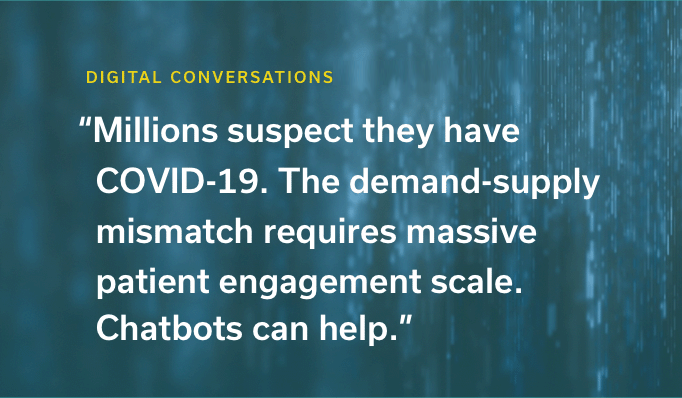As the pandemic resurges into its third year, healthcare workers are struggling to manage the emotional burden of their jobs. Placing the needs of others ahead of their own, many still experience indirect or secondary traumatic stress from helping patients, made even more daunting by record levels of attrition.
Prolonged compassion fatigue is affecting both clinical providers and administrative healthcare workers (like Patient Access), deteriorating patient-provider relationships and satisfaction, and potentially endangering patient safety.
Burnout and Compassion Fatigue — Chicken or the Egg?
Workforce shortages are well-documented. Replacing a nurse can cost up to 1.3 times their annual salary, and wages have doubled in some rural areas due to competition from Walmart and other non-healthcare industries.
When organizations fail to reduce chronic workplace stressors, such as mismatched workload and administrative monotony, over-exhausted employees lack motivation to perform. Half of clinicians particularly struggle with empathy for non-vaccinated eligible patients and nearly two-thirds are losing passion for their jobs. Although so-called ‘moral injury’ is more widely accepted in direct ‘helping professions’ for trauma, the narrative stretches past the frontlines. Today, 52% of all types of healthcare workers, including administrative staff, report compassion fatigue and feel intrusive negative thoughts.
But which comes first? Some experts believe burnout is a precondition to compassion fatigue; others vice versa. One thing is clear: if resource-strained health systems can’t minimize organizational burnout, compassion fatigue will be near impossible to prioritize, placing healthcare workers at great personal risk.
The Compassion We Need Requires More than a Positive Attitude
Compassion reserves are running on fumes, from frontline staff victimized by frustrated patients and families to administrators buried in repetitive documentation. If workers no longer see their careers as manageable nor meaningful, patients are especially at risk for avoidable mistakes and poor outcomes.
Many of the health systems I advised are actively struggling to fill both front and back office roles, and have noticed declining patient satisfaction, despite early upticks during the pandemic. Patients complain that office staff are ‘just not as pleasant,’ and their likelihood to recommend providers has dropped 4.5% since 2020.
Almost half of consumers attribute difficulty managing their care to poor provider communication, and nearly three-quarters of Gen Z take their business to competing retail pharmacies. Even more troubling, care is falling through the cracks, as unanswered phone calls, emails, and EHR portal messages about medication refills and prior authorizations pile up.
Care delays shouldn’t be occurring due to poor coordination. The cumulative effects not only worsen medical conditions and cultivate higher-acuity populations with soaring costs, but also compound patient access problems. First, critical staff shortages coincided with a bump in hospital-acquired infections and also cost hospitals billions from postponed elective surgeries — a key revenue lifeline. Second (and lesser known), inequities and barriers to care in the community worsened. Despite telehealth expansion, nearly half of patients struggle to schedule appointments, with doctors operating on reduced hours or stopping practice altogether.
As health systems financially recover from the COVID-19 pandemic and recoup encounter volume, they’ll face an uphill battle to limit care continuity disruptions and compete for patients. Hiring more workers is not the only solution. Winning health systems must invest in their staff to grow successfully.
Back to Empathy and Compassion with a Digital Workforce
COVID-19 has irrevocably changed patient expectations of their care. How can provider systems build and deploy solutions to address care team burnout and compassion fatigue, while improving patient communication?
1. Focus on administrative patient-facing tasks.
Administration (non-clinical workflows) represents 30%+ of all healthcare spending. Over 80% of administrative patient-facing tasks can be fully automated, freeing up care teams to create more optimal experiences for patients, while reducing cost overhead and overwhelm (or underwhelm). Online presence alone is limiting. Leaders must invest in proactive outreach to re-engage dormant populations and drive continuity across the network at scale.
2. Automate all scripted, repetitive patient outreach.
Population health outreach campaigns fail when workers don’t have the right infrastructure or backend logistics. Hospitals must equip their staff with powerful workflow automation tools to remove staff burden.
For instance, presumptive appointment booking or medication refill programs can notify eligible patients to accept pre-scheduled visit slots or treatment digitally without the need for manual intervention. Health leaders need to invest in solutions that are deeply integrated to existing systems of record to drive deep patient journey orchestration, saving thousands of hours of care team time.
3. Deploy empathetic digital solutions.
Despite the desire for human connection in a post-pandemic reality, staffing issues are here to stay. Health leaders are more accustomed to automating provider workstreams, but have little to no expertise designing human-like patient interactions. All too often, digitization feels transactional and survey-like, leading to high drop-off rates.
What makes technology empathic? It’s easy to understand, contextual, and anticipates needs. These are hallmarks of conversational AI, language-based technology that uses relevant data to personalize information and reduce the friction of search and navigation. Greater speed and convenience delights patients. Conversational AI powers digital assistants on mobile messages, where nearly every consumer prefers to spend their time. With near-perfect memory compared to a human agent, digital assistants also permute hundreds of conversational turns and return behaviors, including patients completing tasks across multiple sessions in less time — and with less repeat backs.
Memorial Health, for example, deployed these strategies to automate the workload of 15 FTEs on lab result delivery and improve patient satisfaction. President of Ambulatory, Jay Roszhart describes, “There’s a thousand things our care teams do every day, a thousand times a day. The key is automating that in a way that still feels like a human connection.”
Healthcare leaders will need these longer-term strategies to supplement pressing burnout and compassion fatigue reduction programs. Medical assistants can get back to more meaningful moments with patients, back office teams can prioritize the right escalations, and all teams can pay extra attention to proper care guidelines and safety protocols. More importantly, they’re freed up to focus compassion back onto themselves.








